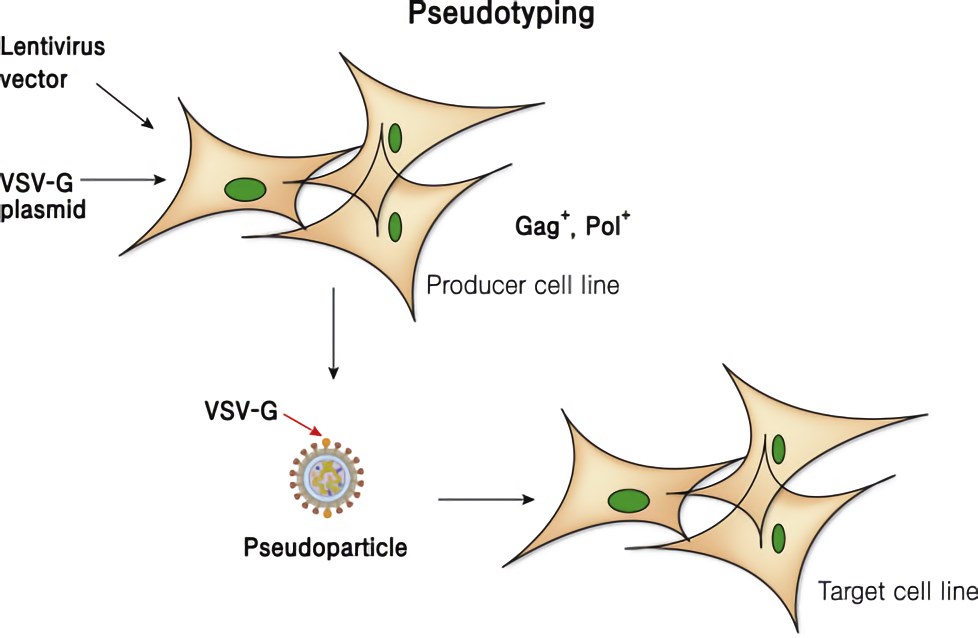Pseudotyping of Lentiviral Vector for Targeting Hepatocytes
Retargeting of lentiviral vectors (LVs) entry to cell types of interest is a key factor in improving the safety and efficacy of gene transfer. Pseudotyped LVs have the ability to transduce specific cell types, such as neurons, hepatocytes, cancer cells, and the like. In particular, LVs pseudotyped with Sendai virus F protein can efficiently deliver genes to the liver, providing a new strategy for the treatment of hepatic diseases.
Viral Vector Targeting Hepatocytes
As known, in vivo gene transfer holds great promise for the treatment of several inherited and acquired diseases. Stable expression of therapeutic genes in the liver may be beneficial for patients with various hepatic and systemic diseases, including metabolic and infectious diseases, hemophilia, hypercholesterolemia and lipid storage diseases. However, achieving efficient delivery and long-term expression of transgenes to hepatocytes without toxicity has been a challenge. Until recently, the development of novel vectors such as large-capacity adenoviral vectors, adeno-associated virus (AAV) vectors and LVs are changing this situation.
LVs are capable of efficiently integrating a sizable gene expression cassette into a target cell, providing a stable and inherited genetic modification. More importantly, it can transduce quiescent cells and provide long-term expression. These properties make it a favorable gene delivery vehicle for the treatment of inherited liver disease and systemic diseases.
The Pseudotyping of LVs
LVs are effective gene delivery vectors suitable for delivering long-term transgene expression in a variety of cell types. They are typically surface-modified (pseudotyped) with various heterologous viral envelopes to alter their tropism, thus targeting specific cell types. The most common example is the envelope glycoprotein from the vesicular stomatitis virus (VSVG). The pseudotype of lentiviral VSV-G protein broadens the breadth of its cell tropism and can infect various cells through the G protein. In addition to VSVG pseudotyped, many other viral glycoproteins (GPs) have also been used, such as GPs from Ross River Virus (RRV) and Lyssavirus.
 Figure 1. LVs are pseudotyped with VSVG.
Figure 1. LVs are pseudotyped with VSVG.
Pseudotyping of LVs Targeting Hepatocytes at Creative Biolabs
It has demonstrated that in vivo studies using VSVG pseudotyped LVs have low transduction efficiency in hepatocytes. Therefore, GPs from other viruses are developed to pseudotype LV to target hepatocytes, especially glycoprotein of Sendai virus. The Sendai virus F envelope protein (SV-F) is capable of binding specifically to the hepatic asialoglycoprotein receptor (ASGP-R), mediating the fusion of the viral envelope with the cell membrane. Human immunodeficiency virus (HIV) and murine leukemia virus (MLV) vectors can be pseudotyped with Sendai virus fusion protein F. These vectors can transduce human hepatoma cells and primary human hepatocytes efficiently. Furthermore, several different approaches are also taken at Creative Biolabs to significantly increase the titer of these pseudotyped vectors.
In addition to LVs pseudotyped with SV-F, we also provide other pseudotyping strategies and solutions based on our customer's requirements.
Features
- Expert scientific support from LVs design to delivery
- Flexibility and versatility
- Full transparency and frequent communications about your project
- Complete confidentiality, consistent quality, and reliable timelines
As a leader suppler in lentivirus production, Creative Biolabs provides high-quality lentivirus services ranging from LVs optimization (such as pseudotyping of LVs), design, as well as safety determination services for basic research. No matter what stage your research is at, our team of scientists will work with you to provide the custom service that best meets your needs. For more information, please contact us.
